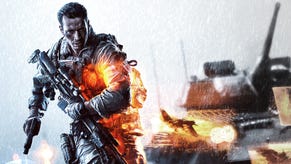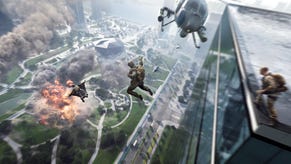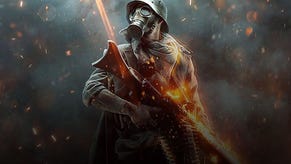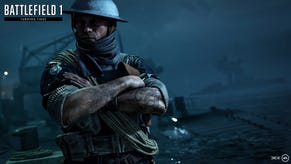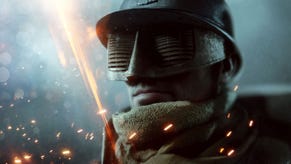Battlefield 4: China Rising DLC broadens horizons for both veterans and raw recruits
Battlefield 4's China Rising DLC drops today for Premium Members, and Paul Davies not only played through it, but spoke with DICE Producer Craig McLeod on how the developer inspires veteran players while encouraging raw recruits.
Though off to a shaky start, Battlefield 3 on PS3 and Xbox 360 eventually earned its stripes among the console gaming legions. Soldiers started to care about career progression outside of Call of Duty, and next-gen performance of EA’s multi-faceted first-person shooter has become a talking point for PS4 and Xbox One. But next-gen Battlefield is about more than the leap from 24 to 64 player maps.
Players raised on the infantry-focused CoD maps may feel reluctant to relinquish the one area of accomplishment they can always rely on. And so, with the first all-formats DLC for Battlefield 4, DICE is enticing everyone out of their comfort zone to take us on a, um, highway to the danger zone!
Popular BF3 mode Air Superiority makes its BF4 debut with the China Rising map pack, and players can rain devastation in control of a bomber. The crazy dirt bikes return from BF3 End Game DLC (still the fastest way to kill distance between you and the enemy, albeit horribly exposed). There are two new gadgets: Unmanned Combat Aerial Vehicle (UCAV) for the Support class and Small Unmanned Aerial Vehicle (SUAV) for the Recon class. Finally, respects are paid to an old BF2 stomping ground…
As DLC producer Craig McLeod outlines: “In China Rising we wanted to offer different experiences for players, we wanted to make sure that each pack has a unique experience irrespective of the type of gameplay. Silk Road and Altai Range are geared towards the use of big vehicles. Guilin Peaks is designed for infantry combat, and then probably our broadest spectrum comes in Dragon Pass, which is a re-imagining of Dragon Valley from BF2, where we’ve included water play as well.”
“In China Rising we wanted to offer different experiences for players, we wanted to make sure that each pack has a unique experience irrespective of the type of gameplay. "
China Rising also embraces, surprisingly beautifully, the cinematic direction that Battlefield 4 has headed as opposed to the pure gritty realism vibe of BF3. According to McLeod, all of the maps were designed "to show off the majestic Chinese mainland, primarily the variety that China has to offer."
Levolution is also handled differently to the bombast of Shanghai’s collapsing skyscraper or Paracel Storm’s pants-soiling shipwreck. Both visually and in terms of gameplay, Levolution in China Rising is subtle.
“We wanted to show a different side of Levolution, because Levolution is a huge range of things,” McLeod emphasises. “Not just collapsing helicopters or boats crashing in, but smaller gameplay things that create a tug of war situation. We put bollards in the radar station, so that when you approach it you don’t know what state it’s in. There’s terrain destruction on the sand dunes as well, leaving craters after big explosions.
"We’ve also done Levolution on a smaller scale for weather: on Altai Range it starts snowing, on Dragon Pass it rains and fog rolls down the hills of Guilin Peaks.”
Of the three new all-new maps that we experienced at EA, the stand-out locale was Guilin Peaks. Game modes here are infantry oriented, vehicles are transport only. Its real-world equivalent lies in the Yangshuo valley in Southern China, a series of tunnels and caves eroded from limestone. Tourists flock to enjoy a mud bath here, but the bloodbaths in Team Deathmatch or Domination are thrilling because of the interlocking pathways.
“Those caves are a great feature because they create that tighter infantry gameplay,” McLeod enthuses. “It also allows our outside capture points to have shortcuts into the middle. From the middle, if you can control that, you can patrol out between or through the mountains. The routes split and branch through the mountain which is really cool.”
Our experience in Silk Road was limited to Domination within the military base, dead centre of the map. Beyond its walls on one side is desert dunes, while on the other is multi-tiered rocky terrain. Among the dunes the dirt bike really comes into its own with MeLeod liking it to "riding the waves on water, but without the additional movement action.”
Among the barricades, however, the symmetrical layout forces one of the tug-of-war scenarios that McLeod alluded to earlier, both teams wish to avoid being trapped on the inside like ducks in a barrel. It’s hilarious if you’re playing in good spirits. Main thing is, don’t have everyone bunching together to serve multi-kills on a plate.
Altai Range is a vehicular playground. It feels dauntingly vast even while limited to 16 vs. 16 players. Hurtling along a shallow stream on the dirt bike toward distant mountains as sniper bullets snap into nearby rocks is a heart-in-mouth experience. To avoid the whole thing falling into disarray, Altai Range is the one area in China Rising that truly requires team communication, gaining ground inch by inch. While there is a terrific TDM area in the form of the weather radar station, Altai Range is the place to advance your broader Battlefield game.
“We want to show off the variety of play from our air to our land vehicles: get on the bikes, be in tanks, get on helicopters,” encourages McLeod. “The bomber is an H-6 for Chinese and Russian teams, and for the US side it’s the B-1 Lancer. This is tied to one of the central capture areas, so when own that flag you can enter into the command trailer which ‘teleports’ you into the gunning position of the bomber.
"You then get four missiles to wreak havoc on the people below! We were originally going to make it pilot-able, but it was so big and hard to manoeuvre, also so overpowering.”
“[Frostbite 3 provides] additional power where as before, we’d have to go with wider simpler shapes so that we don’t use up so much processing power."
Finally, the familiar Dragon Valley map from Battlefield 2, along with the Frostbite 3/Levolution facelift, gets a fun new vehicle for its rebirth as Dragon Pass. The Jet-bike really picks up the pace on the river, weaving between islands to intimidate and distract while RIBs make their stealthy landings. Its construction site is a superb TDM location, where it’s easy to forget the natural surroundings beyond as you focus on telltale enemy footsteps close by.
To wrap up, McLeod clued us in on one of the lesser obvious but still tantalising advantages of Battlefield 4 running on PS4 and Xbox One. Every map looks terrific in China Rising for next-gen and even better on PC, where the sky is the limit, but in addition to the increased visual fidelity above PS3 and Xbox 360 is a distinctly game-changing improvement.
“Because we have additional power now, we can make the geometry more exact,” said McLeod. “Before, we’d have to go with wider simpler shapes so that we don’t use up so much processing power. Now that the power has been beefed up, we can refine the game in that way.”
In other words, if you’re upgrading from PS3 or Xbox 360, the maps you may think you know so well suddenly have a whole new level of depth to them. Seeking out even the slightest of spaces through which to take aim could become another major distraction.
Just don’t let your search for increasingly more obscure hidey-holes be at the expense of enjoying the myriad layers of gameplay that Battlefield uniquely offers across all formats.
Battlefield 4: China Rising DLC drops December 3 for Premium, and on December 17 for everyone else. Screenshots below feature Sam's playthrough of Guilin Peaks and Silk Road.


